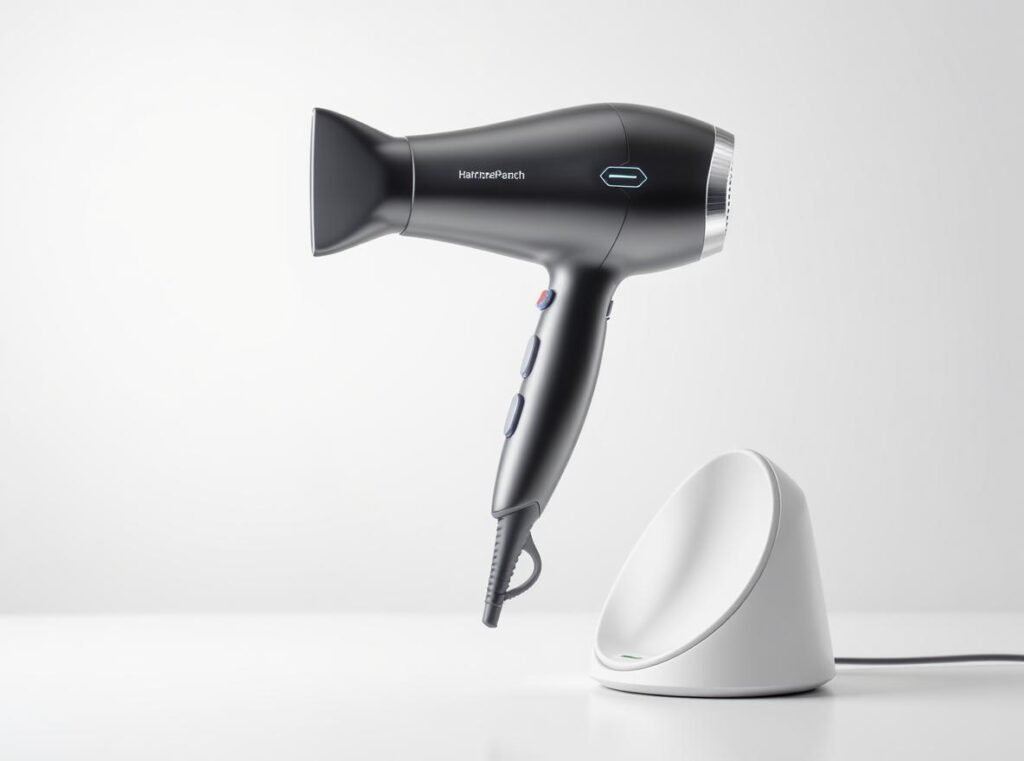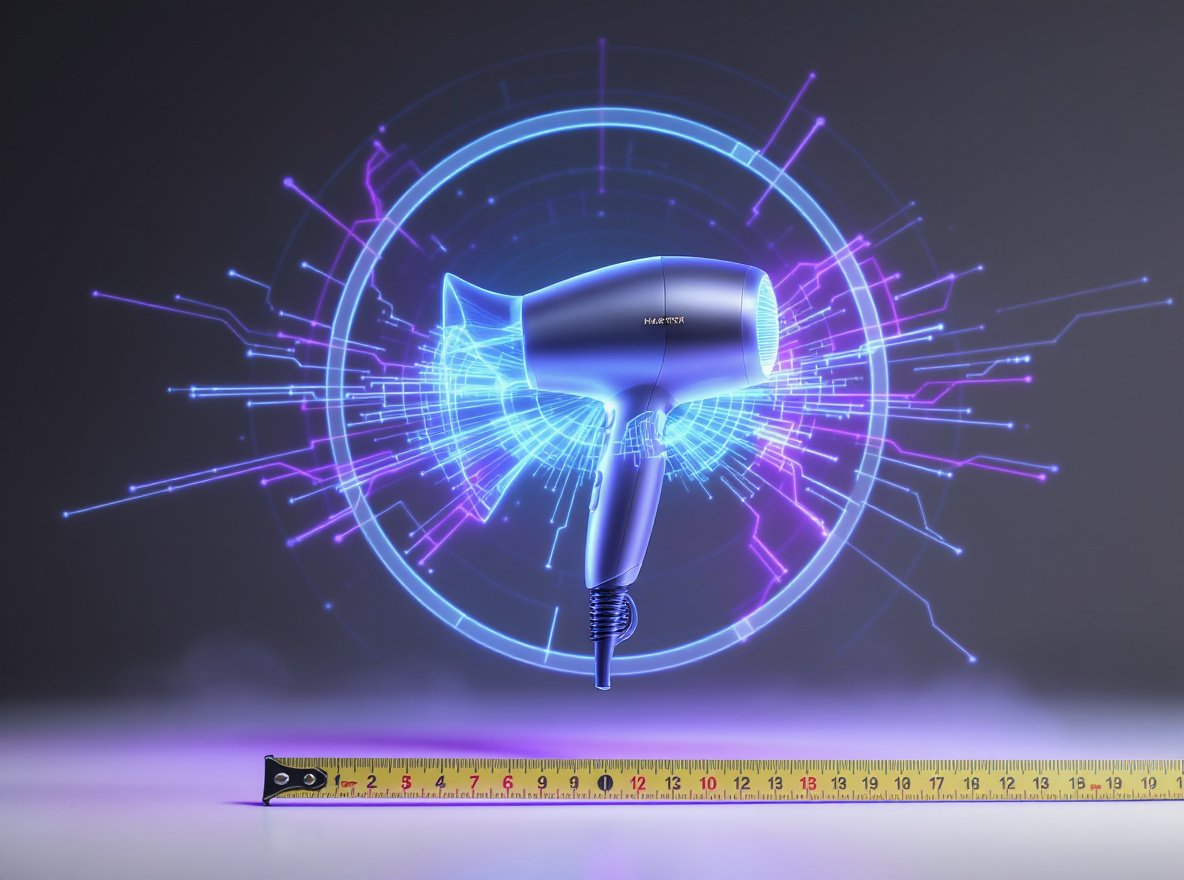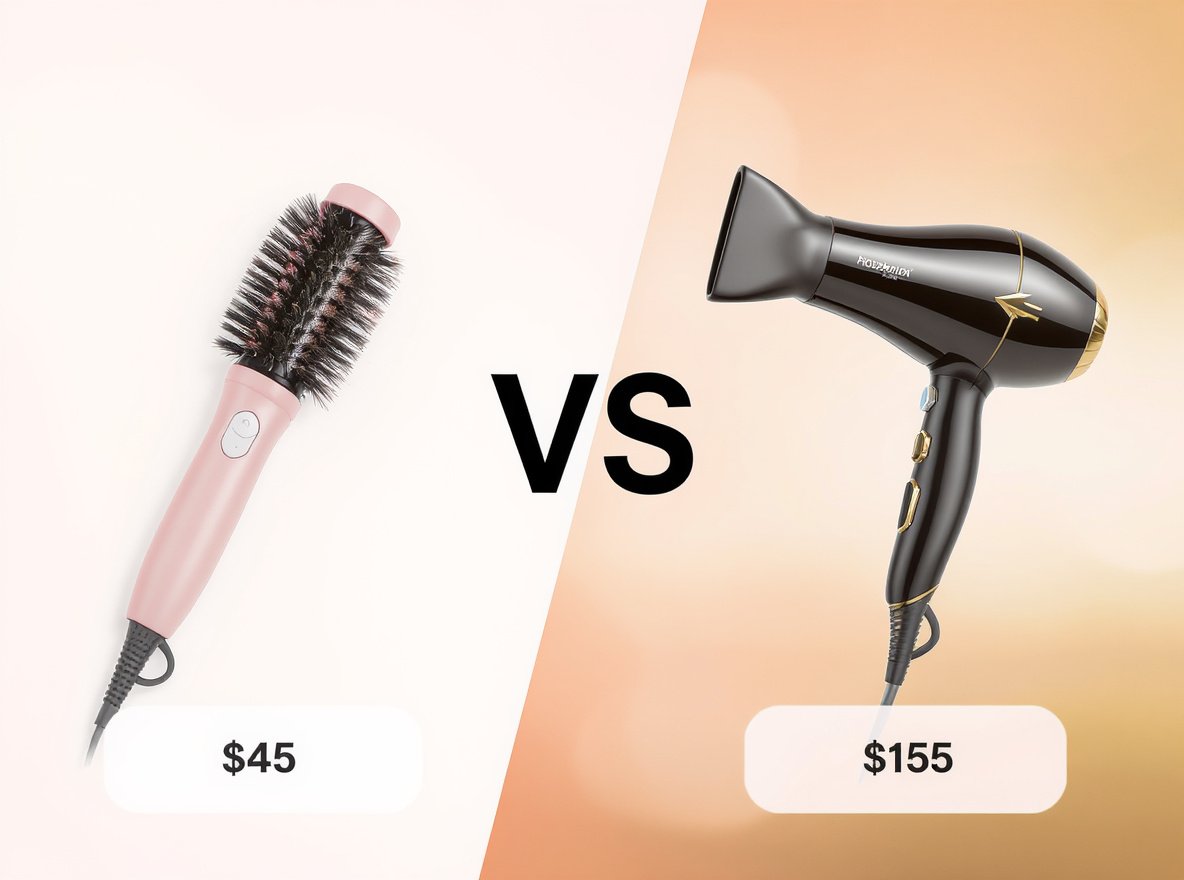The freedom of cordless styling sounds appealing, but many wonder if battery-powered hair dryers can truly handle daily hair care routines. With promises of portability and convenience, these devices face the reality of limited power and runtime constraints.
Battery-powered hair dryers are generally not practical for daily use, especially for those with thick or long hair. Most cordless models provide only 10-40 minutes of hot air drying per charge and significantly less power output (under 600W) compared to traditional corded dryers (1800-2000W), making them suitable primarily for occasional use, travel, or quick touch-ups rather than regular styling routines.
Keep reading to discover the complete analysis of battery-powered hair dryers, including actual performance data, specific limitations, and whether they might work for your particular hair care needs.
Table of Contents
ToggleHow Long Do Battery-Powered Hair Dryers Actually Last?
Understanding real-world battery performance is crucial when evaluating cordless hair dryers for daily use. Many manufacturers’ claims don’t reflect actual usage scenarios, leaving consumers disappointed with runtime.
Battery-powered hair dryers typically provide 10-40 minutes of hot air drying and 2-3.5 hours of cold air usage per charge, with most models delivering closer to 15-20 minutes during continuous hot air use. Charging time generally requires 3-4 hours for a full battery cycle.
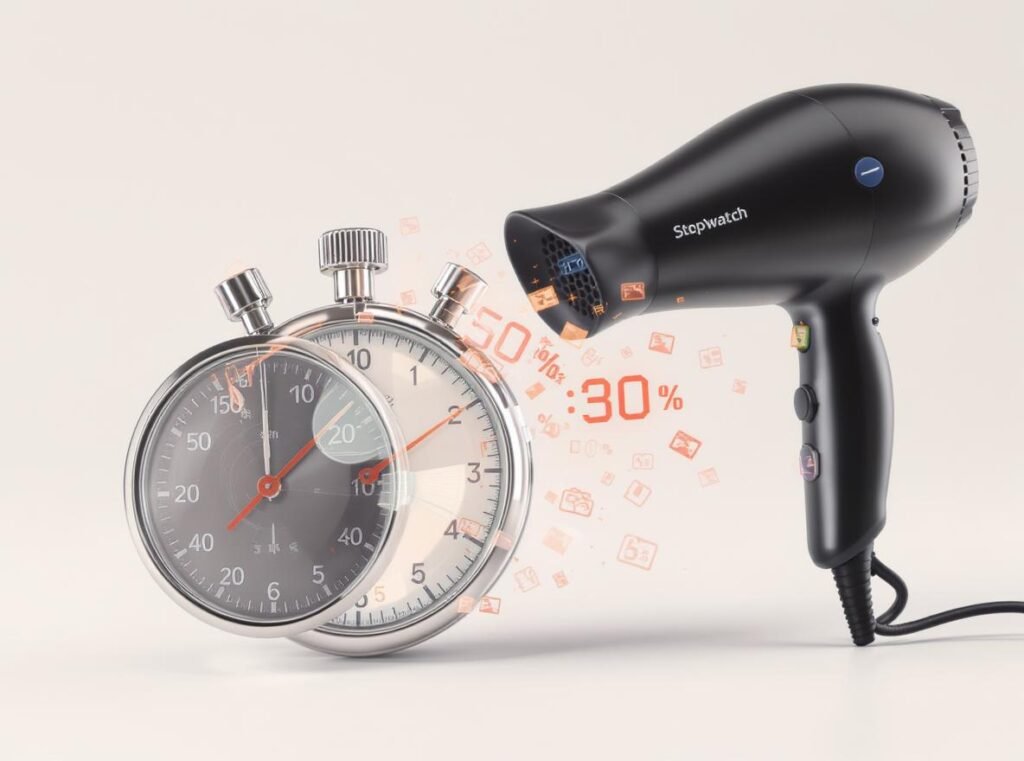
This limited runtime often means you cannot complete a full drying and styling session on a single charge, particularly with thick or long hair. The significant difference between hot and cold air usage stems from power consumption patterns.
Battery performance varies dramatically based on several factors:
| Heat Setting | Typical Runtime | Power Consumption | Best For |
|---|---|---|---|
| Hot Air (High) | 10-20 minutes | Maximum drain | Quick touch-ups |
| Hot Air (Medium) | 20-30 minutes | Moderate drain | Short hair styling |
| Hot Air (Low) | 30-40 minutes | Reduced drain | Fine hair drying |
| Cold Air | 2-3.5 hours | Minimal drain | Setting styles |
Most users find that thick or long hair requires significantly more drying time than these runtimes allow, making multiple charging cycles necessary for complete styling sessions.
Are Cordless Hair Dryers as Powerful as Corded Models?
Power output remains the most significant limitation of battery-powered hair dryers. This fundamental constraint affects drying efficiency, styling capability, and overall user satisfaction.
Cordless hair dryers produce significantly less power than corded models, with most battery-powered units operating below 600W compared to 1800-2000W for traditional corded dryers. This power difference results in weaker airflow, reduced heat output, and substantially longer drying times.
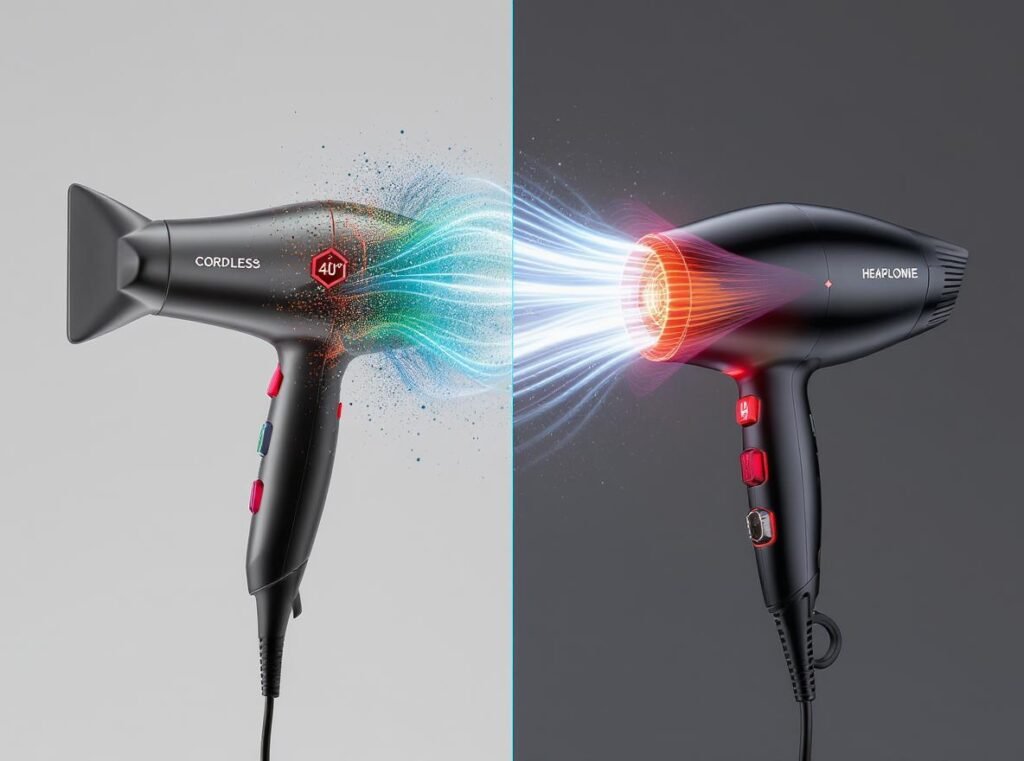
The power limitation isn’t just a minor inconvenience—it fundamentally changes the hair drying experience. Lower wattage means less forceful airflow, which affects both drying speed and styling effectiveness. Professional stylists consistently report that cordless models cannot match the performance of their corded counterparts.
Key power-related limitations include:
- Weaker airflow reduces drying efficiency
- Inconsistent heat output affects styling results
- Longer drying sessions increase overall styling time
- Reduced ability to handle thick or textured hair types
- Limited effectiveness for professional styling techniques
The physics of battery technology currently prevents cordless hair dryers from matching corded performance. While batteries continue improving, the energy density required for high-wattage operation remains a significant challenge for portable devices.
What Are the Main Advantages of Battery-Powered Hair Dryers?
Despite power limitations, battery-powered hair dryers offer specific advantages that make them valuable for certain users and situations. Understanding these benefits helps identify when cordless models make sense.
The primary advantages include complete portability, elimination of cord restrictions, safety improvements through reduced tripping hazards, and the ability to style hair anywhere without electrical outlet access. These benefits prove particularly valuable for travelers, outdoor enthusiasts, and users with specific mobility needs.
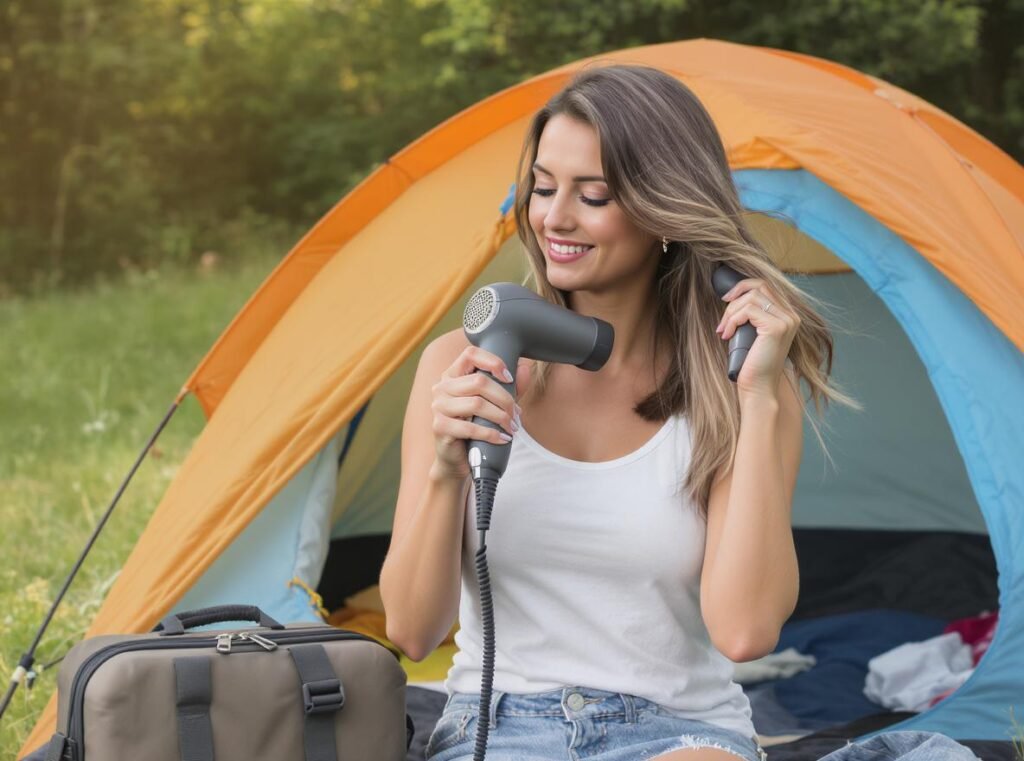
Portability represents the most significant advantage of battery-powered hair dryers. Users can style their hair in any location, from hotel rooms with inconvenient outlet placement to outdoor settings where electrical access is unavailable.
Specific advantages include:
- Travel convenience: Lightweight and compact for easy packing
- Outdoor utility: Perfect for camping, beach trips, or poolside styling
- Safety benefits: No cord eliminates tripping hazards and accidental pulling
- Mobility freedom: Unrestricted movement during styling sessions
- Eco-friendly operation: Rechargeable batteries reduce disposable battery waste
- Emergency backup: Useful during power outages or electrical issues
The convenience factor extends beyond simple portability. Users with limited bathroom space, shared living situations, or specific accessibility needs often find cordless models more practical than traditional dryers, even with performance trade-offs.
What Are the Limitations of Cordless Hair Dryers?
Understanding the drawbacks of battery-powered hair dryers is essential for setting realistic expectations. These limitations significantly impact daily usability and long-term satisfaction.
Major limitations include extremely short battery life on hot settings, substantially reduced power output, longer drying times, fewer heat and speed options, higher upfront costs, and inevitable battery degradation over time. These factors often make cordless models unsuitable for regular use, especially for users with demanding hair care routines.
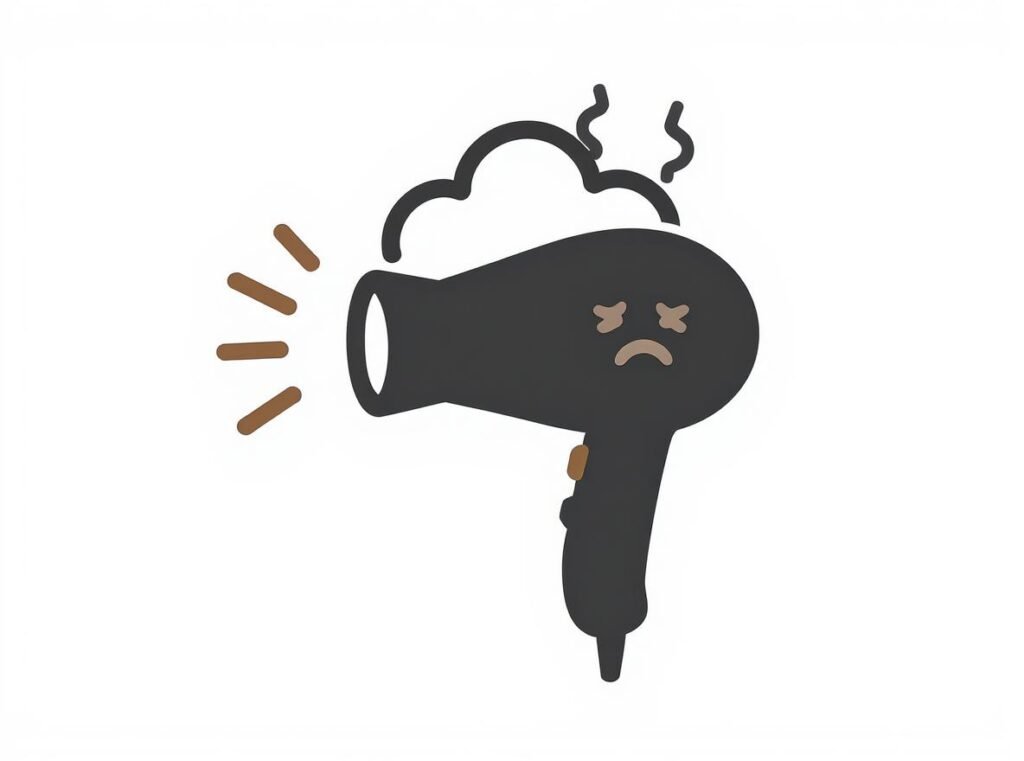
Battery degradation represents a particularly problematic limitation. Unlike corded hair dryers that can last for years with minimal performance decline, battery-powered models experience reduced capacity over time, eventually requiring battery replacement or complete device replacement.
Critical limitations include:
- Runtime constraints: 10-40 minutes often insufficient for complete styling
- Power deficiency: Weak airflow and inconsistent heat output
- Charging delays: 3-4 hour charging cycles disrupt daily routines
- Limited settings: Fewer options to conserve battery life
- Cost concerns: Higher initial investment with ongoing replacement needs
- Durability issues: Battery degradation reduces device lifespan
- Performance inconsistency: Heat and airflow may fluctuate as battery drains
These limitations prove particularly problematic for users with thick, long, or textured hair that requires substantial drying time and consistent heat application.
Who Should Consider Battery-Powered Hair Dryers?
Not all users will benefit from battery-powered hair dryers. Identifying the right candidates helps match technology with actual needs and expectations.
Battery-powered hair dryers work best for frequent travelers, individuals with short or fine hair, people needing occasional touch-ups, and outdoor enthusiasts who prioritize portability over performance. These users typically accept performance trade-offs in exchange for convenience and mobility.
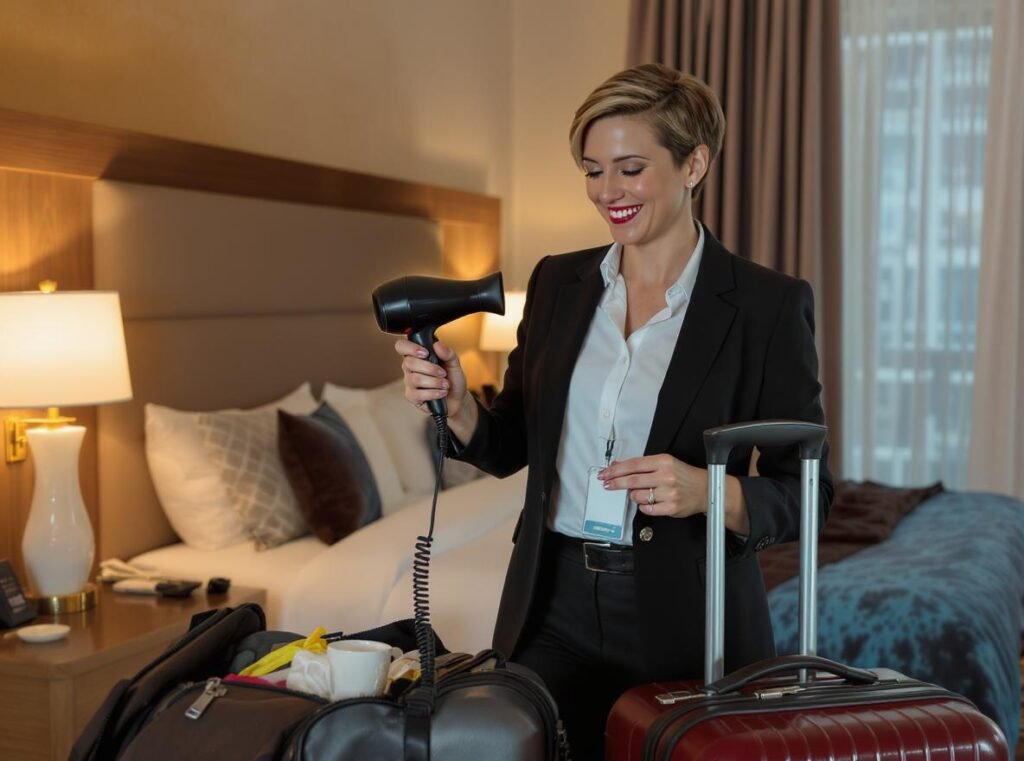
Frequent travelers represent the primary target market for cordless hair dryers. The ability to style hair anywhere without outlet concerns proves invaluable for business travel, international trips, or accommodations with limited electrical access.
Ideal candidates include:
- Business travelers: Regular hotel stays with varying outlet configurations
- Outdoor enthusiasts: Camping, hiking, or beach activities without electrical access
- Short hair users: Minimal drying time requirements within battery limitations
- Fine hair types: Less power needed for effective drying and styling
- Occasional users: Infrequent styling needs or quick touch-up requirements
- Mobility-limited individuals: Benefit from cordless operation and reduced cord hazards
Users with thick, long, or curly hair generally find battery-powered models insufficient for their needs, requiring multiple charging cycles or incomplete styling results.
How Do Battery-Powered Hair Dryers Compare to Traditional Models?
A comprehensive comparison reveals the significant trade-offs between cordless and corded hair dryers. Understanding these differences helps consumers make informed decisions based on their priorities.
Traditional corded hair dryers offer superior power (1800-2000W vs under 600W), unlimited runtime, more heat and speed settings, and longer device lifespan, while battery-powered models provide portability and outlet independence at the cost of performance and practicality. The comparison clearly favors corded models for regular use, with cordless options serving specialized needs.
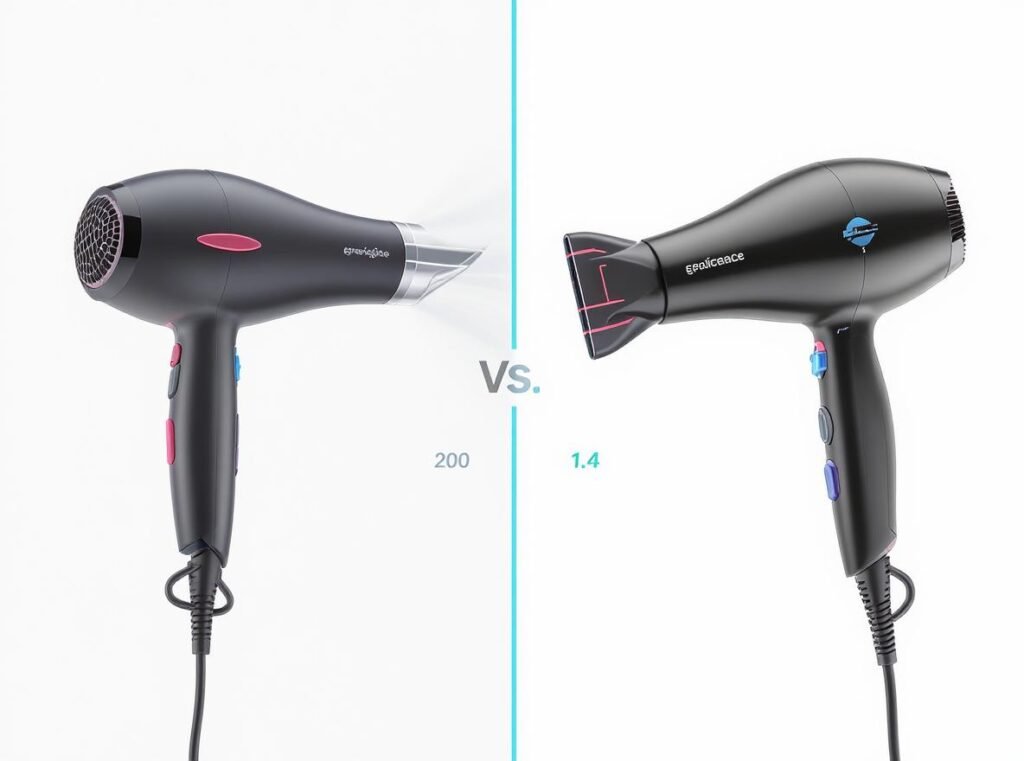
The performance gap between technologies is substantial and affects every aspect of the hair drying experience. Corded models provide consistent power delivery, while battery-powered alternatives struggle with power management throughout the discharge cycle.
Here’s a detailed comparison of key factors:
| Feature | Battery-Powered | Traditional Corded |
|---|---|---|
| Power Output | Under 600W | 1800-2000W |
| Runtime | 10-40 min hot, 2-3.5 hrs cold | Unlimited |
| Drying Time | Significantly longer | Faster, more efficient |
| Heat Settings | Limited options | Multiple precise settings |
| Portability | Excellent | Outlet-dependent |
| Initial Cost | Higher | Wide range available |
| Long-term Cost | Battery replacement needed | Minimal maintenance |
| Reliability | Battery degradation issues | Consistent performance |
The comparison demonstrates that while battery-powered hair dryers excel in portability, they compromise significantly on performance, efficiency, and long-term value.
Are There Any Safety Concerns with Battery-Powered Hair Dryers?
Safety considerations differ between battery-powered and traditional hair dryers. Understanding these risks helps ensure safe operation and proper device selection.
Battery-powered hair dryers present unique safety concerns including lithium-ion battery risks (overheating, fire, explosion), but eliminate cord-related hazards such as tripping and accidental pulling. Proper usage, following manufacturer guidelines, and avoiding damaged devices significantly reduce safety risks.
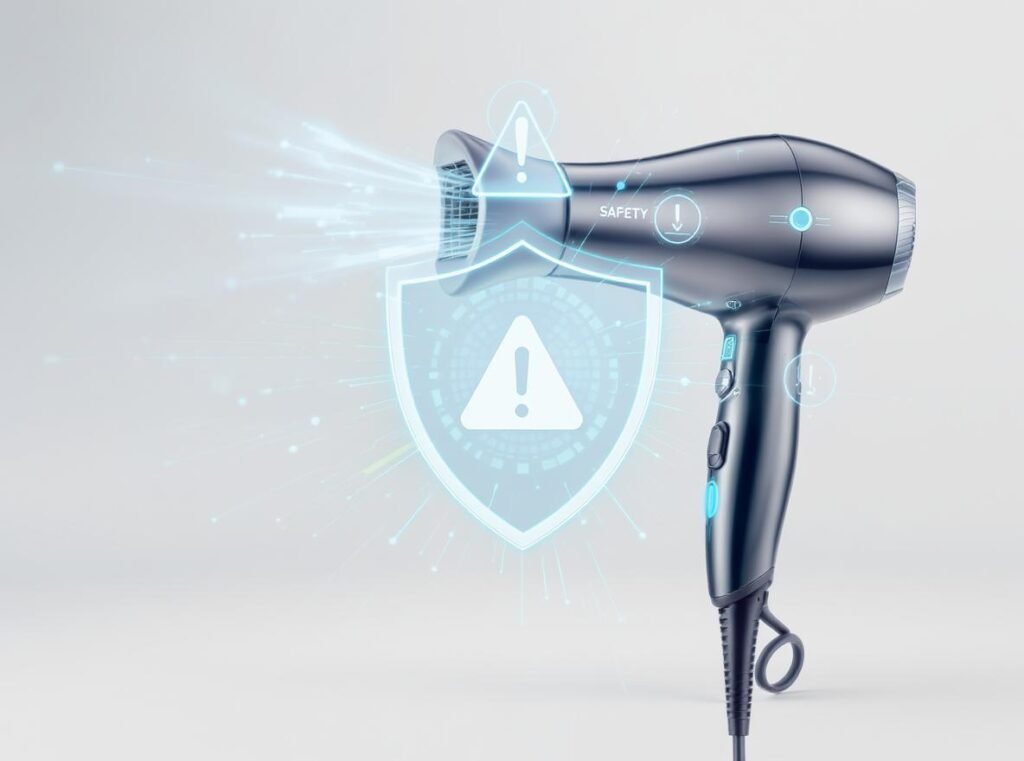
Lithium-ion batteries require careful handling and charging practices. Overheating, physical damage, or manufacturing defects can lead to serious safety incidents including fires or explosions. Users must follow charging instructions precisely and discontinue use if batteries show signs of damage or swelling.
Key safety considerations include:
- Battery safety: Follow charging guidelines and inspect for damage regularly
- Water exposure: Maintain standard hair dryer precautions around water sources
- Overheating protection: Ensure devices include thermal safety cutoffs
- Proper storage: Store in cool, dry conditions away from extreme temperatures
- Quality assurance: Purchase from reputable manufacturers with safety certifications
The elimination of electrical cords provides safety benefits by reducing tripping hazards and preventing accidental device displacement during use.
What Should You Look for When Buying a Battery-Powered Hair Dryer?
Selecting the right battery-powered hair dryer requires careful evaluation of key specifications and features. Understanding these factors helps identify models that best meet specific needs and expectations.
Essential features include high battery capacity (measured in mAh), maximum available wattage, multiple heat and speed settings, fast charging capability, safety certifications, and comprehensive warranty coverage. Professional-grade models often include additional attachments and advanced motor technology, but at premium prices.
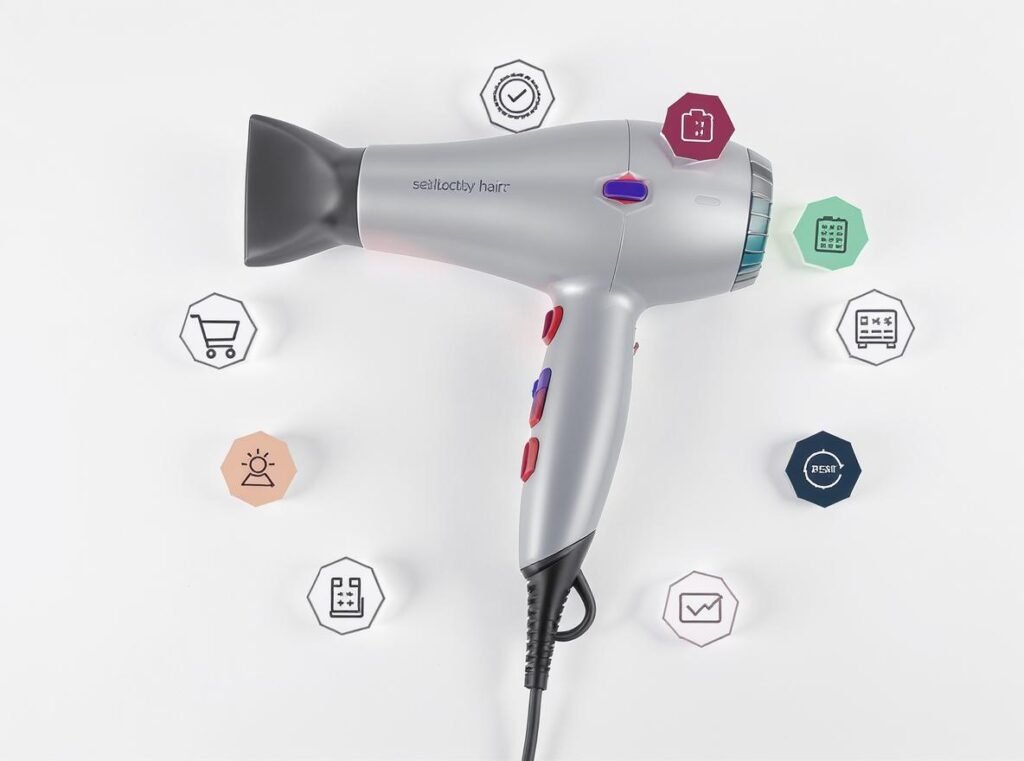
Battery capacity directly correlates with runtime and performance consistency. Higher mAh ratings provide longer operation periods, though they also increase device weight and charging time. Look for models with at least 10,000mAh capacity for reasonable daily use potential.
Critical purchasing criteria include:
- Battery capacity: Higher mAh ratings for extended runtime
- Power output: Maximum available wattage within battery constraints
- Charging efficiency: Fast charging capabilities under 3 hours
- Safety features: Overheat protection and battery management systems
- Build quality: Durable construction and reputable brand backing
- Warranty coverage: Comprehensive protection against defects and battery issues
- User reviews: Real-world performance feedback from actual users
For wholesale buyers evaluating inventory options, consider the Conason P1C high-speed hair dryer, which offers professional-grade performance with negative ionic technology and consistent power delivery. Visit our product page to explore specifications and wholesale pricing options.
Summary
Battery-powered hair dryers offer unmatched portability and convenience but are generally not practical for daily use due to limited runtime (10-40 minutes), reduced power output (under 600W), and longer drying times. They work best for travel, outdoor activities, or quick touch-ups rather than regular styling routines. Users with thick or long hair should expect performance limitations that may require multiple charging cycles or incomplete styling results.
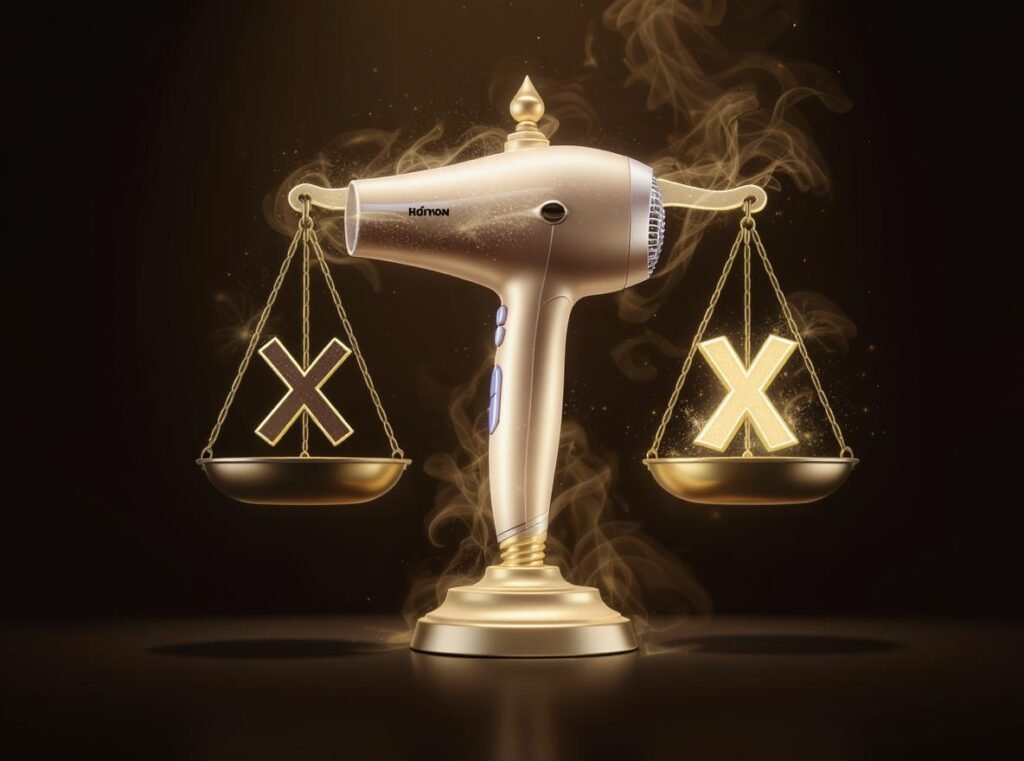
Ready to explore professional-grade hair dryer options that deliver consistent performance for your customers? Browse our complete product collection or contact us for wholesale inquiries and competitive pricing on high-quality hair dryers designed for reliable daily use and retail success.

